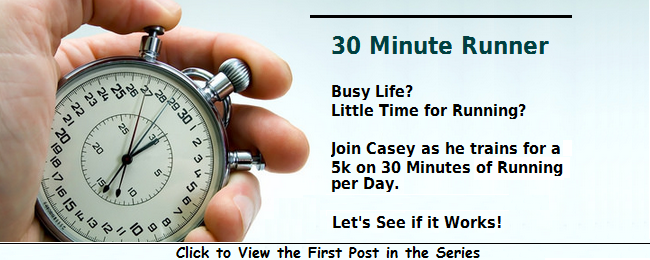
I ran another 10-20-30 workout on Wednesday and it went well. I still have concerns with my sore knee, so I didn’t sprint the 10 second intervals quite as fast as I have in other workouts.
As I mentioned in my prior post, I’m still a little concerned about how fast I am running the various 10-second, 20-second, and 30-second intervals.
To ease my worries, I took a closer look at the 10-20-30 workout study and discovered that the answer to this question is based on my VO2Max.

What is VO2Max?
A person’s VO2Max is one one of the most important predictors of running success. But what does it mean?
“V” stands for volume, “O2″ stands for oxygen, and “Max” is short for “Maximum.” Therefore, VO2Max stands for the maximum amount of oxygen that the body can consume in an amount of time.
Due to the fact that oxygen is a component of the “fuel” that propels a runner’s muscles, the more oxygen that a body can consume the faster it will be able to run.
How to Improve VO2Max
Researchers have known for a long time that one of the best ways for a runner to improve his or her VO2Max is for him or her run at the slowest pace that maxes out the body’s oxygen consumption capacity.
One way to estimate this pace is to run all out for 8-10 minutes. For example, if can cover 2 miles in ten minutes, your VO2Max pace is probably around 5:00 minutes per mile.
Many experts recommend that the best way to improve VO2Max is to run your VO2Max pace in intervals of two to six minutes with an equal amount of rest in between. Generally, the total distance of the intervals should be between 3.5 and 5 miles.
Due to my busy schedule, the amount of time it takes to run these types of workouts always caused me to believe that I couldn’t effectively improve my VO2Max. The 10-20-30 workout has changed my idea of VO2Max training.
Why the 10-20-30 Workout is Intriguing
Instead of running intervals at VO2Max pace for two to six minutes, the 10-20-30 workout calls for a runner to run at VO2Max pace for 10 seconds at a time – with 50 seconds of steadily increasing rest in between (the 30 and 20 second intervals).
Ten seconds is not very much time in isolation, but fifteen 10 second intervals with short rest adds up. Based on the research that I mentioned above, short VO2Max intervals with brief rest may be a way to increase VO2Max in the confines of a 30 minute workout.
Please understand that I’m not suggesting that workouts such as the 10-20-30 are better than the traditional VO2Max workouts; however, they may provide a way for a busy runner to find time to increase VO2Max and improve running performance.
So How Fast Do I Run the 10-20-30 Repeats?
Based on my understanding that the 10-20-30 workout is primarily a VO2Max workout, it is critical that I run the 10 second intervals at my VO2Max pace.
To find my current VO2Max pace, I used the excellent McMillan Running Calculator. Enter a recent race result in the form and the calculator will provide you with your current “vVO2Max,” which is another name for your VO2Max pace.
I did this for my recent 20:43 equivalent 5k race time two weeks ago and the calculator found that my vVO2Max is 6:08:

With this information, I know that I must run my 10 second intervals at 6:08 mile pace. My Garmin GPS watch is really helpful in ensure that each 10 second interval is close to this pace.
I’m not as concerned with the pace of the 30 second repeats – these are primarily rest jogs.
I’m also not as concerned with the pace of the 20 second workout, but do want to make sure that I run them at an honest 60% effort – this will make it easier to get to top speed for the critical 10 second repeats.
I’m glad that I took the time to look into the specific purpose and goal of the 10-20-30 workout. Understanding why you are a running a workout is very important and definitely helps with motivation.





